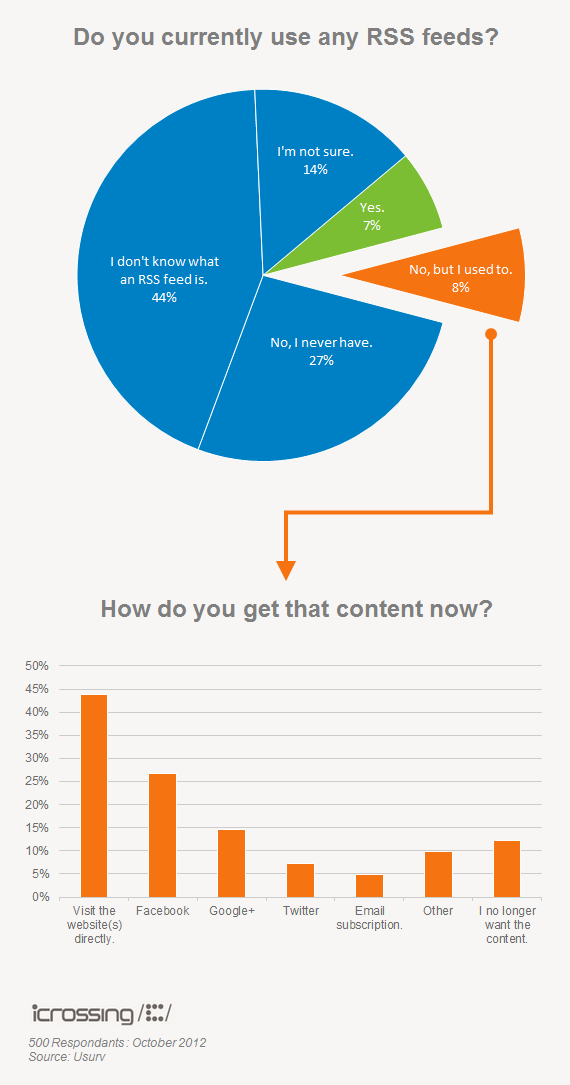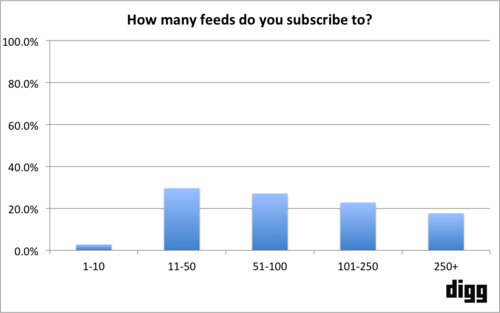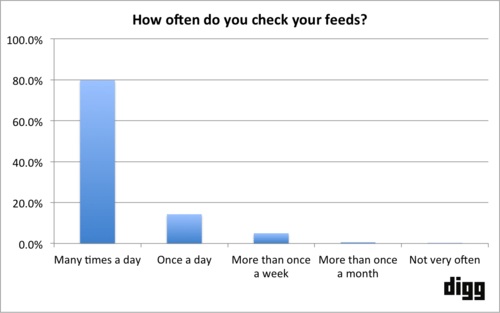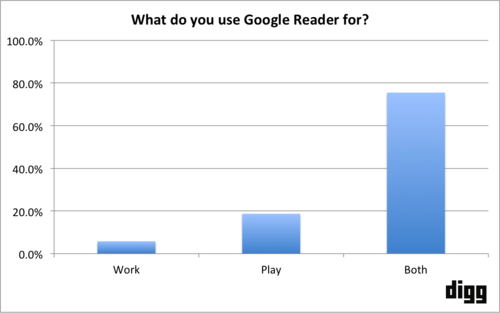Google inspired shock, awe and some epic headlines when it killed off Google Reader last month.
- “Like a Dagger to Bloggers’ Hearts, Google Just Killed Google Reader” – The Atlantic
- “In Soul-Destroying Move, Google Kills Google Reader” – The Daily Beast
- “Google Kills Reader, Force-Feeds Us Google+: Don’t Be Evil?” – IB Times
But the shuttering wasn’t without reason; use of RSS feeds has been on the decline for months. The chart below shows results from an iCrossing study in which respondents were asked whether or not they currently use RSS feeds. Just 7% responded “yes,” and an additional 8% responded “no, but I used to.”

As you can see in the second component of the chart, former RSS feed users are replacing that tool with social options: Facebook, Google+ and Twitter, for example. I’d be willing to bet that save-for-later services like Pocket fall under the “other” option as well.
What we’re witnessing here is a shift in content consumption trends. But it’s important to note that not everyone made this shift, and not everyone is happy with the results. I had this discussion with a friend the other day who vented that, while Reader alternatives do exist, this was a product she was incomparably comfortable with, and one she logged into multiple times a day for both work and play. Learning a new tool — not to mention exporting and importing subscriptions — takes time, effort and a fair share of frustration.
So who are these mysterious RSS users, anyway?
Digg took note of this rampant discontent from slighted Google Reader users and has since set about building its own version of the RSS feed. To kick things off, they surveyed a group of 8,000 people who volunteered to help them work on the upcoming product. The study revealed a few surprising findings about these users.

Here’s the thing about Google Reader users: they do a lot of reading. Forty percent of respondents follow more than 100 feeds.

And Reader is by no means an intermittently-used tool; in fact, 80% of respondents check Google Reader many times a day.

It’s also a tool that freely crosses work and home boundaries, with 75% using it for both work and play. Digg’s conclusion? Google Reader is (er, was) a tool for power users. And as the chart below demonstrates, they’re hungry for a replacement.
 What this means for marketers
What this means for marketers
Sure, these die hard RSS feed types are few and far between. But they consume far more content than the average user. So ignore this group at your peril. First and foremost, you’ll need to dive into analytics to figure out whether these RSS feed types are actually hanging around your content. If not, perhaps it’s not worth your effort.
If you do get a decent amount of traffic from RSS (definition of “decent amount” at your determination), you’ll want to help these users get to your content through a new tool. Alternatives include email subscriptions, an in-content Save to Pocket button or a circle us on Google Plus call out. To find that sweet spot you can poll readers and test a variety of options. Just remember that as a content producer, it’s your job to hand readers the tools that they prefer.
